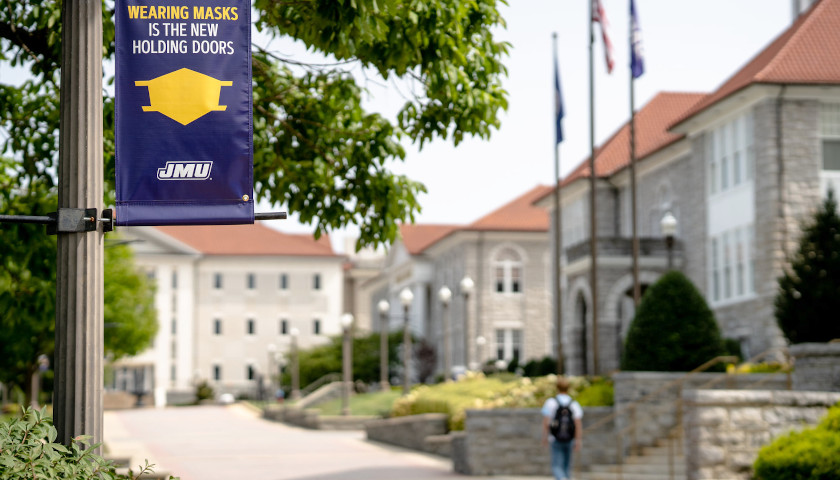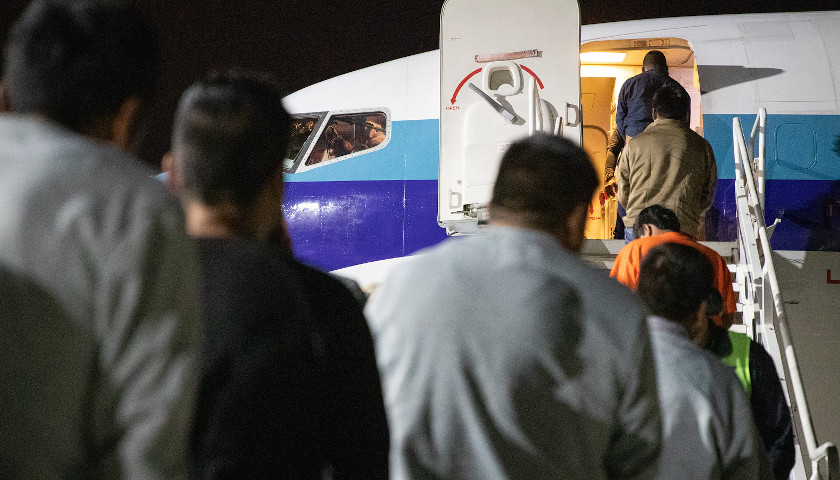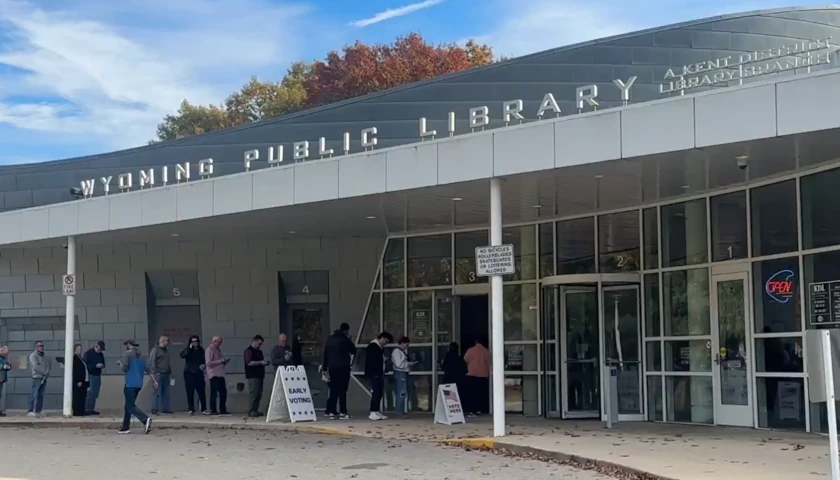Students at James Madison University (JMU) resumed in-person classes on Monday after spending almost a month away from campus learning virtually because of a significant rise in COVID-19 cases and inadequate isolation/quarantine spaces.
At the beginning of September, university president Jonathan Alger announced JMU was temporarily sending most on-campus students home and switching to virtual instruction. Now, students are back at the Harrisonburg, Virginia campus to give the 2020 fall semester another shot.
This time around the school has made some new adjustments to its protocols and restrictions to hopefully avoid a repeat spike in cases.
The number of quarantine/isolation beds available to students was quadrupled from before, classes are now capped at 50 people or less, 300 non-symptomatic students are tested every week as part of a new surveillance testing program and there is now fully-dedicated staff in dining halls making sure students are adhering to wearing masks and physically distancing, according to Caitlyn Read, director of communications and university spokesperson.
“We feel very confident that we can handle an increase in case numbers, which we anticipate may happen once students fully return, but we feel better prepared to handle it,” Read said in an interview with The Virginia Star.
When asked whether or not JMU, which has about 22,000 total students, has considered the possibility of going virtual a second time if COVID conditions worsen, Read said the university would not have brought students back if they were not entirely confident the rest of the semester could be conducted safely with in-person classes.
Despite JMU’s confidence in its ability to handle another rise in cases and finish out the fall, not all community members thought the decision to bring students back for in-person instruction was a good idea.
Results from a recently launched Google form where people could submit their thoughts on resuming normal classes and returning to campus showed a nearly even split down the middle.
“We saw an almost 50-50 split in that data,” Read said. “So, we saw about half of the people really wanted to be back [on campus], wanted to be in-person and the other half wanted to be entirely online and did not want to come back.”
For Emily Wells, a junior biology student at JMU, the school’s decision comes with mixed thoughts.
“I’m kind of ok with it, but I think nobody actually thought that President Alger was going to bring students back to campus,” Wells said in an interview with The Star. “I understand slightly why they did, although there is a really big suspicion in the community that the school is just going to send students home again when the cases inevitably spike.”
Because Wells lives off-campus and all of her classes have been online since the beginning of the semester she is not one of the students that was impacted by going virtual or coming back, but does have concerns over other students following guidelines for the rest of the semester.
“I know there are many many people at JMU that don’t think [COVID] is an issue and I think that they’re ultimately going to be the ones that ruin the semester for the rest of us.”
Wells also mentioned that she isn’t too concerned about contracting the virus herself, but more so worried about passing it along to a person with pre-existing conditions or someone who is immunocompromised.
According to the JMU COVID-19 dashboard, there have been 1,527 total cases since July 1, but only 33 cases are currently active.
During the period of time when there was a decreased number of students living on campus, the 7-day moving average for both the total daily positive cases and daily positive cases recorded at the university health center decreased.
Additionally, as of Monday, 92.4 percent or 291 out of 315 quarantine/isolation beds are available, according to the dashboard.
One stat JMU’s dashboard does not track is the number of hospitalizations from COVID, to which Read said there have been about three or four instances, but could not provide an exact figure because students have to self-report hospital visits to the university.
– – –
Jacob Taylor is a reporter at The Virginia Star and the Star News Digital Network. Follow Jacob on Twitter. Email tips to [email protected].
Photo “James Madison University Campus” by James Madison University.





